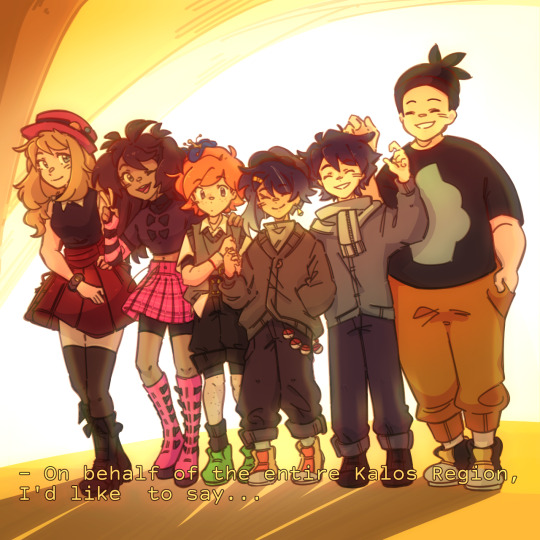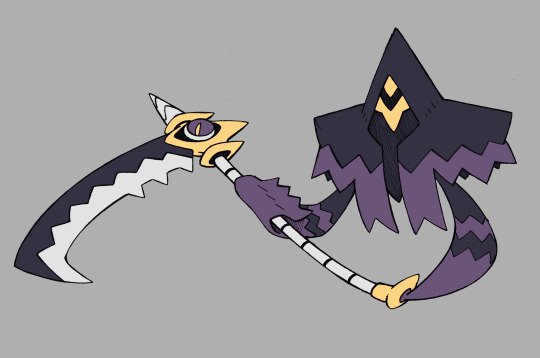#regional variations
Text
How does one account for the unique environmental conditions and ecological systems of a region in architecture?
Accounting for the unique environmental conditions and ecological systems of a region is a crucial aspect of architectural design. Every region has its distinct environmental characteristics, including climate, topography, vegetation, and ecological systems. Architects must consider and respond to these factors to create sustainable, resilient, and contextually appropriate designs. This article…

View On WordPress
#architecture#climate-responsive design#contextually appropriate designs#continuous learning#ecological balance#ecological systems#energy efficiency#environmental impact#experts and consultants#innovation#interdisciplinary collaboration#passive design techniques#regional variations#renewable resources#resilience#site analysis#site planning#sustainability#sustainable landscaping#technical knowledge#unique environmental conditions#user comfort
1 note
·
View note
Text
Weather in India: A Kaleidoscope of Diversity
Introduction:
India, a land of immense geographical and cultural diversity, also boasts a fascinating range of weather patterns. From the snow-capped peaks of the Himalayas in the north to the tropical beaches of the south, the weather in India is as diverse as its people. In this blog, we will take a closer look at the various climatic zones and weather phenomena that shape the Indian subcontinent throughout the year.
The Monsoon Marvel:
One cannot talk about the weather in India without mentioning the monsoon season. The monsoons play a vital role in the country's agriculture and are eagerly awaited by farmers and city dwellers alike. Lasting from June to September, the monsoons bring much-needed rain to the parched land, rejuvenating rivers, lakes, and forests. The southwest monsoon is responsible for the majority of the country's annual rainfall, and different regions experience varying intensities of rainfall.
Seasonal Variation:
India experiences four distinct seasons: winter (December to February), summer (March to May), monsoon (June to September), and post-monsoon (October and November). Each season has its unique characteristics, offering different experiences and challenges across the country.
Winter: In the northern parts of India, winter can be bitterly cold, with temperatures dropping close to freezing. However, the southern regions enjoy a more moderate and pleasant climate during this time.
Summer: Summers in India can be scorching, particularly in the central and northern regions, where temperatures often soar above 40 degrees Celsius (104 degrees Fahrenheit). Coastal areas experience more temperate conditions due to the influence of sea breezes.
Monsoon: The arrival of the monsoon brings relief from the summer heat, but it also brings heavy rainfall and occasional flooding. The western coast and the northeast region receive the highest amount of rainfall during this season.
Post-Monsoon: After the monsoons, the country enters a transitional phase. This period sees a decrease in rainfall and gradually transitioning temperatures as India prepares for winter.
Regional Variations:
The vast size of India contributes to significant variations in weather across different regions. Let's explore some of the distinctive weather patterns experienced in various parts of the country:
Northern India: The northern states witness hot summers and freezing winters, with regions like Jammu and Kashmir experiencing heavy snowfall. The Himalayas protect this region from the impact of monsoons, resulting in relatively drier conditions.
Western Coast: The states along the western coast, including Maharashtra, Goa, and Kerala, experience a tropical monsoon climate. These regions receive heavy rainfall during the monsoon season, with lush green landscapes and beautiful waterfalls.
Northeast India: The northeastern states receive substantial rainfall throughout the year, with heavy showers during the monsoons. This region is known for its breathtaking landscapes, dense forests, and diverse wildlife.
Desert Regions: Rajasthan and parts of Gujarat fall within India's arid zone, characterized by scorching summers and limited rainfall. The Thar Desert, also known as the Great Indian Desert, experiences extreme temperatures and sparse vegetation.
Conclusion:
The weather in India is a fascinating amalgamation of climatic zones, seasonal variations, and regional differences. It showcases the country's natural diversity and influences various aspects of life, including agriculture, tourism, and cultural traditions. Whether you're planning a visit to India or simply intrigued by its climatic diversity, understanding the weather patterns can help you make the most of your experience in this captivating country.
#India#weather patterns#climatic zones#monsoon#seasons#regional variations#diverse landscapes#agriculture#tourism#cultural traditions
1 note
·
View note
Link
Kabobs, the succulent skewers of marinated and grilled meat, have been a beloved culinary tradition for centuries. Originating in ancient Persia, these flavorful creations have since evolved and spread throughout the Mediterranean and beyond, taking on diverse forms and flavors. In this article, we'll explore the rich history and evolution of kabobs, tracing their journey from their humble beginnings to their modern-day popularity in restaurants like Naan and Kabob. Read the article to know more.
#history of kabobs#evolution of kabobs#ancient Persia#modern Mediterranean#regional variations#marinades and spices#kabob traditions#Naan & Kabob
0 notes
Text
#for it's sour cream and onion aaaaaall the way#yes this is uscentric im not looking up every regional variation of the word or most popular flavors everywhere#we'll all be fine#for me a close second is these artichoke ones that got discontinued rip i miss them so much
253 notes
·
View notes
Photo

Johto's own fire fighting squad!
3K notes
·
View notes
Text

Some coast striker concept doodles, mostly to showcase their weirdo double tongue + i love drawing teeth. Also whelps are see through when they hatch, most lose this quality as they grow, but a few (especially in the Deepwater) keep their translucency well into adulthood.
A small fun fact, many humans call coast strikers "grinning deaths" as their toothy snarls can look like a grin to a person. Given their amount of teeth and their two tongues, other AshWings can find them a bit unsettling
#wings of fire#wof#ashwing#dragons#art#oh yeah remember those region variation drawings i made? im dividing the coast into three regions: the deepwater (open ocean/seabed)#the saltwater (the coastal cliffs) and the freshwater (more inland in the peninsula lots of#wetlands and rivers and lakes. kinda like everglades and mangroves in some areas#however im not sure about the eggs. hmmmm#bc its like this OR regular eggs with an almost conical shape which i believe is common in cliff birds? so the eggs spin on the same place#instead of out of the nest and falling to their doom
382 notes
·
View notes
Text

Thank you :)
#digital art#art#original character#pokemon#oc#digital artwork#oc artwork#pokemon oc#original character art#pokemon original character#oc tag#canon x oc#pokemon trainer oc#oc x canon#pokemon trevor#trevor pokemon#pokemon serena#serena pokemon#tierno pokemon#pokemon tierno#pokemon shauna#shauna pokemon#izumi shimizu#ai kouseki#direct variation#pokemon x and y#pokemon xy#gen 6#kalos region#kalos
167 notes
·
View notes
Text



Kroelian HONEDGE, DOUBLADE & GASHINIGAMI (Steel/Dark)
They are based on Sickles and Scythes and the idea of soul-stealing blades. When they "end" someone, their souls become trapped in the piece of clothe at the end of the blade.
They have the ability "Soul Reaper", this absorb any ghost-type attack and restore some HP
#pokemon#fakemon#fake pokemon#regional form#regional variant#regional variation#regional evolution#honedge#doublade#sickle#scythe#grim reaper#dark type#steel type#steel pokemon#ghost pokemon#ghost fakemon#steel fakemon
3K notes
·
View notes
Text
and if i said i liked greasy nargacuga more than fluffed up nargacuga then what


#but i like the design updates theyre like the same species in different regions#like wolves and bears have a lot of variation#nargacuga#monster hunter#monster hunter rise#text
160 notes
·
View notes
Text




#coworker wanted to see hanfu-inspired pokemon designs#was gunna do more region variations for pokemon#but got distracted and the inspiration left me :’)#heckart#digital art#pokemon#hanfu#beautifly#polteageist#gym leaders#pokemon oc#gyarados#gardevoir#cherrim
73 notes
·
View notes
Text
How does one interpret the use of geometric patterns in Middle Eastern art?
Geometric patterns have long been a hallmark of Middle Eastern art, captivating viewers with their intricate designs and mesmerizing symmetrical arrangements. These patterns are not merely decorative elements; they carry deep cultural, spiritual, and symbolic meanings. In this article, we will explore the methods and approaches one can employ to interpret the use of geometric patterns in Middle…

View On WordPress
#art appreciation#art forms#artistic expression#balance#contemporary interpretations#craftsmanship#cultural identity#cultural influences#cultural traditions#divine nature#geometric patterns#heritage#Interpretation#intricate designs#mathematical foundations#mathematical principles#mathematical ratios#Middle Eastern art#optical illusions#regional variations#spiritual significance#Symbolism#symmetry#tessellation#tiling#transcendence#unity#visual complexity#visual intrigue
1 note
·
View note
Text
Palestinian seb3 baharat recipe roundup
#1
Arabic-language, Palestinian youtuber, from her mother
1/2 Tbsp nutmeg (جوزة الطيب) (optional)
1 1/2 Tbsp cassia cinnamon (قرفة) (quills or bark)
3 Tbsp allspice (بهار حلو)
1 1/2 Tbsp cardamom (هيل)
1/2 Tbsp cloves (قرنفل)
1 1/2 Tbsp black pepper (فلفل أسود)
1/2 Tbsp ginger (زنجبيل)
1 1/2 Tbsp coriander (كزبرة)
1/2 Tbsp dried lemon / loumi (لومي)
Measurements after grinding. Tbsp = ملعقة كبيرة, tsp = ملعقة; not US customary measurements.
Comment says ginger is modern; Wikipedia says loumi is commonly an ingredient in Gulf-region 7-spice.
#2
English-language, Palestinian youtuber, from her grandmother
1 cup black pepper
1/3 cup cinnamon
1/2 cup allspice
1/4 cup cardamom
1/4 cup cumin
3 cloves
2 nutmeg pods
Measurements before grinding. US customary measurements.
#3
English-language, Palestinian food writer.
6 tablespoons whole allspice
6 cassia bark sticks or cinnamon sticks
3 tablespoons coriander seeds
1 tablespoon black peppercorns
1 teaspoon cardamom seeds
1/2 teaspoon cumin seeds
10 whole cloves
2 blades mace
1/2 whole nutmeg, crushed
Called "nine-spice" but it's the same blend. Measurements before grinding; US customary measurements.
#4
East Jerusalem Goods store, seems to be owned by Israelis?
"Our baharat is a mixture of: clove spice, English pepper, black pepper, nutmeg, cardamom spice, cumin, and a touch of dry coriander."
"English pepper" refers to "فلفل انجليزي" "falfil inglizi" "English pepper" aka "فلفل افرنجي" "falfil afranji" "French pepper" aka "بهار حلو" "bhar hloo" "sweet spice" aka allspice. A direct translation of the Hebrew "פלפל אנגלי"; it doesn't seem to be in common use in Arabic otherwise.
#5
English-language, some white lady living in the "Middle East" claims this is used by "Arabs in Israel"
1 tbsp ground cardamom pods (the black seeds inside)
1 tbsp ground dry ginger
½ tbsp ground nutmeg
1 tbsp ground black pepper
1 tbsp ground cinnamon
½ tbsp allspice
Measurements after grinding. US customary measurements.
#6
English-language, "Levantine" food blogger, recipe from mother & grandmother
1 tablespoon Coriander
1 tablespoon Allspice
1 tablespoon Cumin
1 tablespoon Cloves
1 tablespoon Black pepper
1 tablespoon Cinnamon
1 tablespoon Nutmeg
Measurements after grinding. US customary measurements.
#7
Arabic-language, labelled "Palestinian", page with various regional recipes
2 parts allspice berries (فلفل إفرنجي حب؛ بهار، فلفل هلو؛ كباب صينية)
1 part black peppercorns (فلفل أسود حب)
1/2 part cloves (قرنفل)
1/2 part ground cinnamon (قرفة مطحونة)
1/2 part cumin seeds (كمون حب)
1/2 part ground ginger (زنجبيل مطحون)
1/3 part nutmeg, whole or ground (جوزة الطيب مطحون أو حب)
The recipe gives various terms for allspice which in fact refer variously to allspice (the first three) and cubeb berries (the last one). In this context allspice is certainly what is meant.
Measurements variously before and after grinding. It's unclear whether the "parts" (جزء) are by volume or weight; black pepper is almost twice as dense as allspice...
#8
English-language, comment on "Middle Eastern" recipe that calls for "baharat":
"My family is Palestinian and came from Jordan. The 7 Spice Mixture we use is Allspice, Cinnamon, Nutmeg, Clove, Black Pepper, Cumin and Coriander.”
#these are just in the order I happened to find them btw#then what I do is note ingredients that are in all or virtually all of the blends#note any patterns aka the recipes either have cloves OR nutmeg but not both#think about what each spice is bringing to the blend and how they’re all balanced#(taking into account differences in ground versus whole spice measuring and weight versus volume)#and include all the most popular spices between the various recipes in ‘authorised’ proportions also thinking about how I would balance it#bc you can see a lot of variation in proportion here#and then if there’s any element that is included only in that region I will include it even if not all recipes from that region include it#bc I’m focused on regional variation whenever I make a bunch of different versions of something
43 notes
·
View notes
Text
I love the mental image of people seeing the gang and just quickly peeling more cloves of garlic. just to be sure.
#Dracula Daily#Dracula#Macks Musings#Mihai we need more garlic!#Isn't two cloves enough?#Mihai have you seen our guests especially the young lady#I am going to add more garlic into the ciorbă. Maybe into the țuică just to be safe#Garlic infused țuică?#Well they won't know the difference just tell them it's a regional variation if they ask
299 notes
·
View notes
Text
there is a degree to which the “using dude is misgendering” thing is an issue of cultural + linguistic regional variation not active malicious intent
#the internet has so aggressively flattened regional linguistic variation that discourse like this pops up constantly#yeah! in some dialects it’s just instinctive! we DO use it gender neutrally!!#of course the correct response from the person who has accidentally offended someone is to apologize#which a lot of people get too defensive about - just be understanding in both directions geez
11 notes
·
View notes
Photo


the way i haven’t even gotten to play active high school yet, but these 2 screenshots represent like 3 hours of messing around with mods to get it to work how i want it to 😭
#it wouldn't be so annoying if ruthie didn't have childhood friends that i wanted to also be at her school#but she DOES and getting it to work with keep sims in home regions was rough#then i had to use fashion authority to set up all the uniforms....and the variations of uniforms...and the merging rules#THEN i had to give all the kids makeovers and assign them to their clubs#then remodel the school i'm using to have more chairs in the classroom#bc i'm using the mod that allows 18 kids to show up#when the triplets go to high school they're going alone bc i'm not doing this again lmao#*sunday save
186 notes
·
View notes
Photo

Pokémon Piracy
3K notes
·
View notes